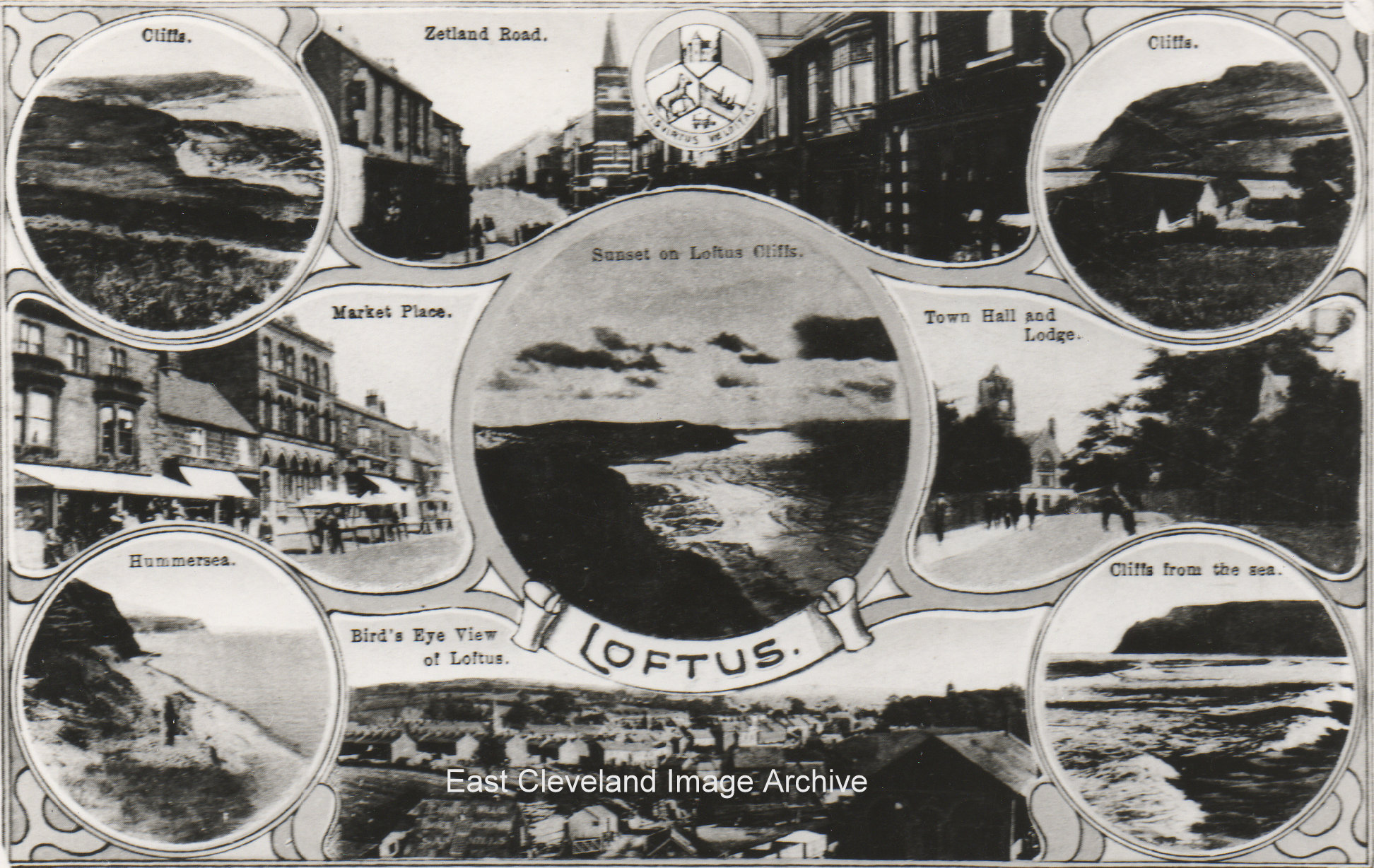
This is a pretty picture postcard extolling the virtues of Loftus. These were a popular way of telling the folks at home what your new location looked like in the days before holidays and easy travel.
|
|
||
 This is a pretty picture postcard extolling the virtues of Loftus. These were a popular way of telling the folks at home what your new location looked like in the days before holidays and easy travel. 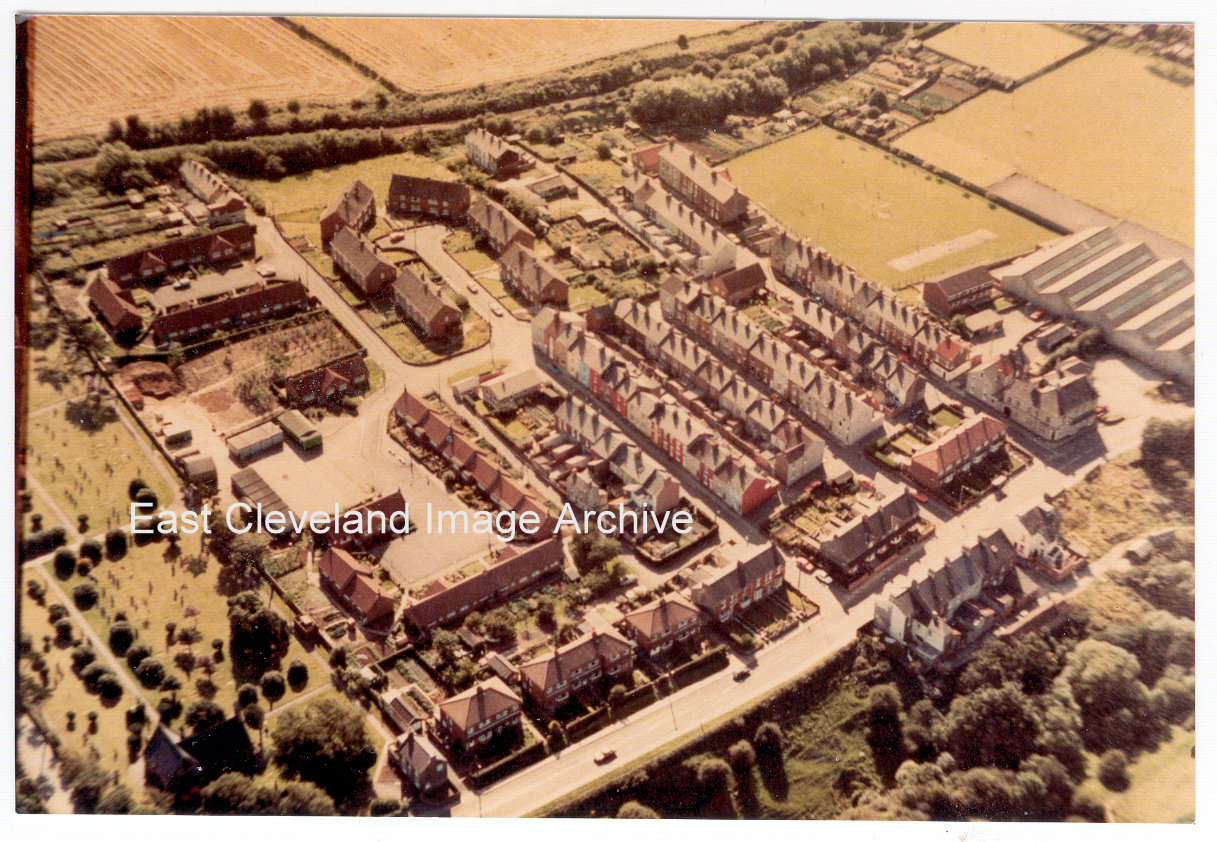 An aerial view of East Loftus, showing the United bus garage on the far right with the playing field behind; it is now known that the image dates from the mid to late 1980s. Later known as the Arriva garage and now merely the framework for the roof and rear wall remain! To the right of the garage is the cricket field with the bowling green just visible at the end of it. A lovely clear view of the streets and to the far left you can see the cemetery, the road in the foreground is the A174 to Whitby. Image courtesy of Mrs Sakelaropoulos, thanks to Derick Knight for the update. 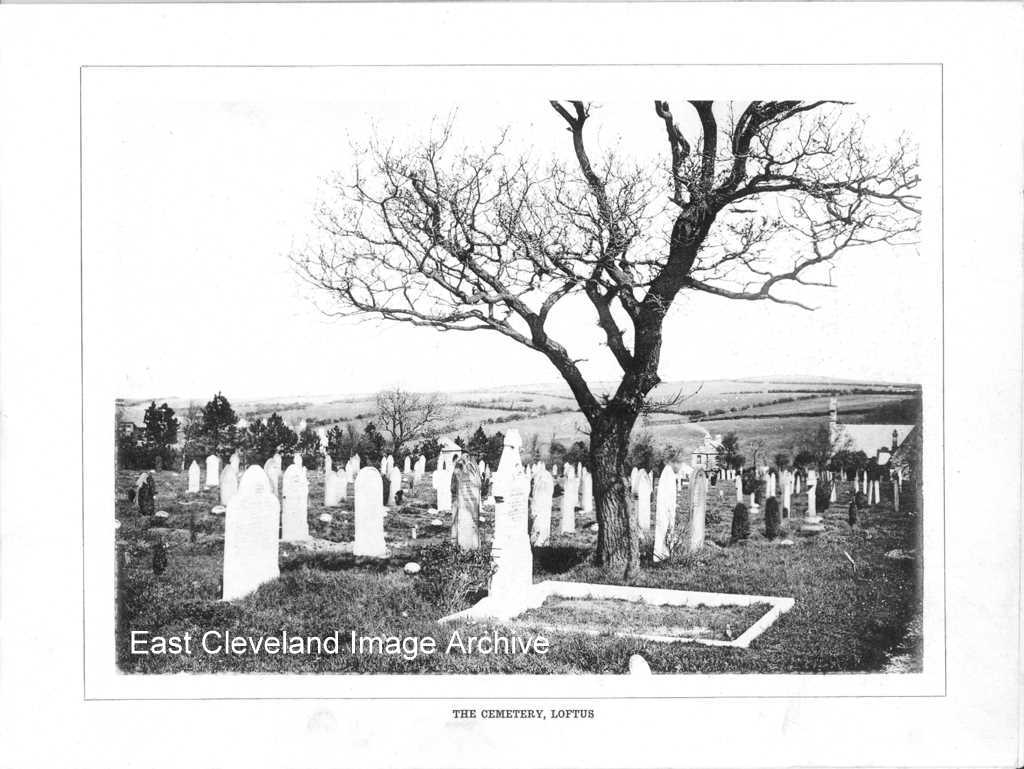 The fact that this is called the Old Cemetery means that Loy Lane must already be well established. Eric Johnson tells us ”The cemetery was laid out in 1857, with mortuary chapel built in the “Norman style”. Marjorie Magor makes a plea: “Friends of Loftus Cemetery would be pleased to have any information regarding old cemetery on Loy Lane. Dates? any well known local dignitaries laid to rest there, history related information, Thanks.” Image from “Views of Loftus-in-Cleveland & Neighbourhood” published by J. F. Cooke, Loftus, thanks to Eric Johnson for the update. 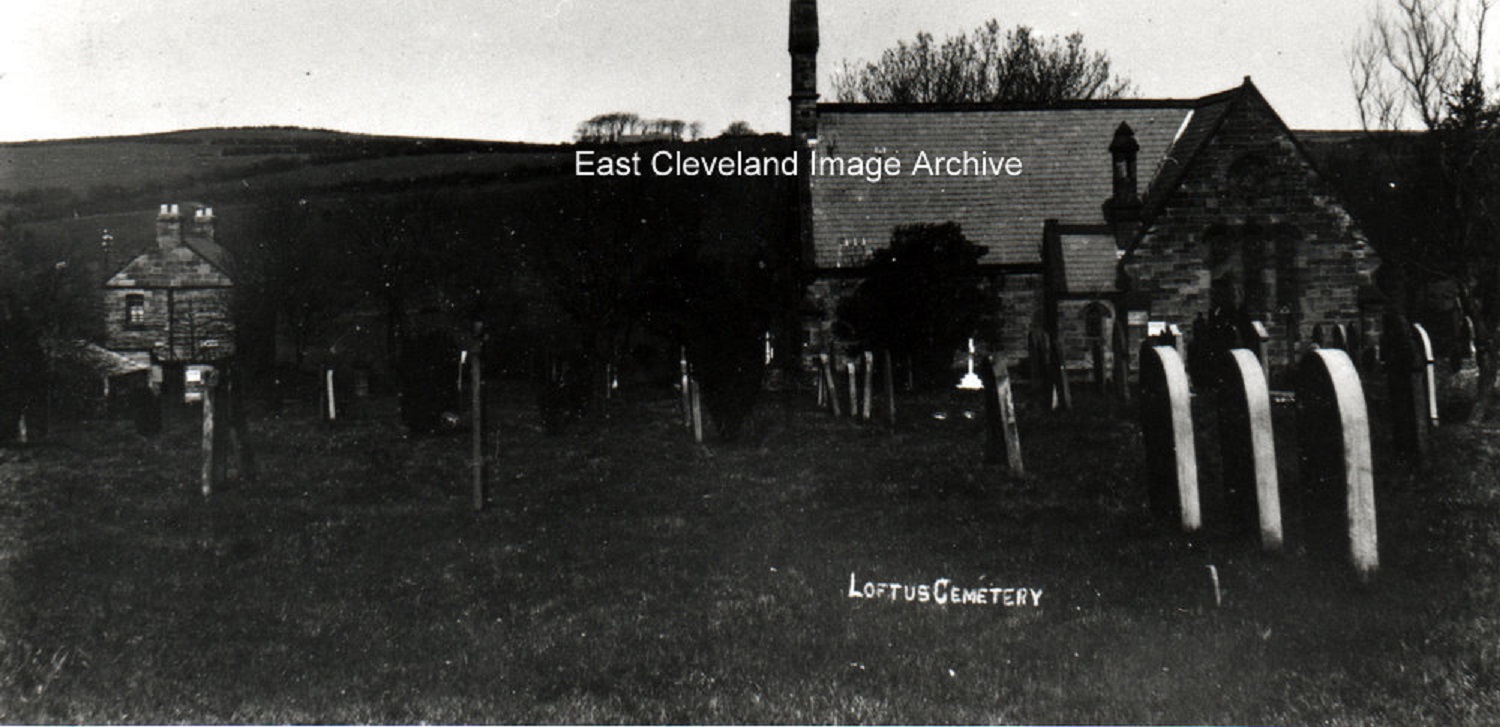 Not the most photographed of places but this image shows the chapel very well. It is now being changed into a house (a sign of the times no doubt). To the left of the photograph is the cemetery lodge once occupied by Mr Sanderson who looked after the cemetery. Ann Wilkinson told the Archive: “My mother, Elizabeth daughter of Edgar Sanderson who lived for a time at Cemetery Lodge told me that one night she woke to see a face looking down at her from the bottom of the bed. The face was surrounded by fog. She was very frightened and put her head under the covers and didn’t look again till morning. Thankfully it never happened again.” Marjorie Magor tells the Archive: “I remember going to Loftus cemetery, with my mam Bessie Fawcett. William Sanderson was her uncle, my great uncle. I always called him uncle Bill Sanderson. He was a fantastic gardener, won prizes all over this area with his Dahlias and Chrysanthemums. He had an amazing grape vine in his greenhouse, they tasted delicious. One thing I remember vividly is taking his dog (a Border Collie) for a walk around the cemetery, his name was “Scot”, what a lovely dog he was too. The “Church” was later to become a mortuary (I think).” Jeanne Simms has advised: “I now live in Cemetery Lodge. The chapel was a chapel and mortuary; council workers used it as a place to take a break. There were beautiful pews and a pulpit. Now it’s converted into a house. Looking around the cemetery I found the grave of Arthur Howard who was caretaker of the cemetery for 33 years. Sadly it was all overgrown but I’ve since cleared it. He is buried there with his wife Joanna, daughter Joanna and son in law. Now to look for William Sanderson’s grave.” Norman Patton has a request: “I would be well chuffed if you could discover the burial place of my Great Grandparents….Elizabeth Ann and William Hicks both of whom died in the first half of the 20th century and I believe were laid to rest in or close to the old cemetery. Both of these fine people played substantial parts in the history of Loftus during the East Cleveland equivalent of the ‘Gold Rush’!” Image from a T. C. Booth postcard and thanks to Ann Wilkinson, Marjorie Magor, Jeanne Simms and Norman Patton for the updates.
A street trader’s horse and cart outside the shop at the bottom of Tees Street. Allan Hoggarth advises us: ”I am sure this is Eddie (or Neddy) Jackson! He used to have a lock-up on Dam Street where he would leave his cart and stock. I seem to remember he had a small attachment to the building for his horse, (couldn’t swear to that though). The building was burnt down one weekend by vandals. Never saw Eddie again after that!” We are now aware that the small boy was David Linton and his mother is shown purchasing some fruit in 1947. Image courtesy of Joyce Dobson and thanks to Allan Hoggarth for the update. 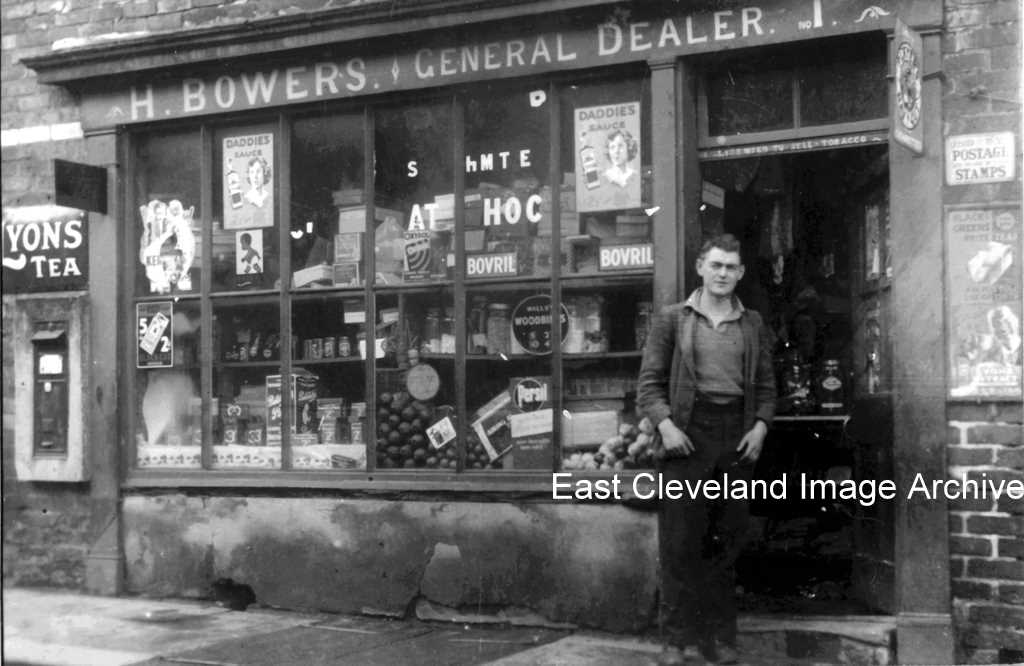 Frederick William Bowers, Harry’s son, is standing in the doorway of the shop at No 1 Tees Street, East Loftus. Fred was born in 1916, so the photograph was probably taken in the late 1930s. Owen Rooks tells the Archive: “I’m pretty certain that this is the shop which was run by the Misses Amy Thurlow and Florence Fletcher for a while in the late 1940’s early 1950’s. Amy Thurlow was raised at Boulby Barns and her family feature in several photographs on your site. As close friends of my mother, Misses Thurlow and Fletcher were both known to me as “Aunty”. I recall that at the time they owned the shop, the accommodation above it was occupied by the Brown family (Mother, daughter whose name I forget and son Colin).” Joan Jemson adds: “I remember the shop when it was owned by Miss Thurlow and Miss Fletcher.” Image courtesy of Keith Bowers, thanks to Owen Rooks and Joan Jemson for the updates. 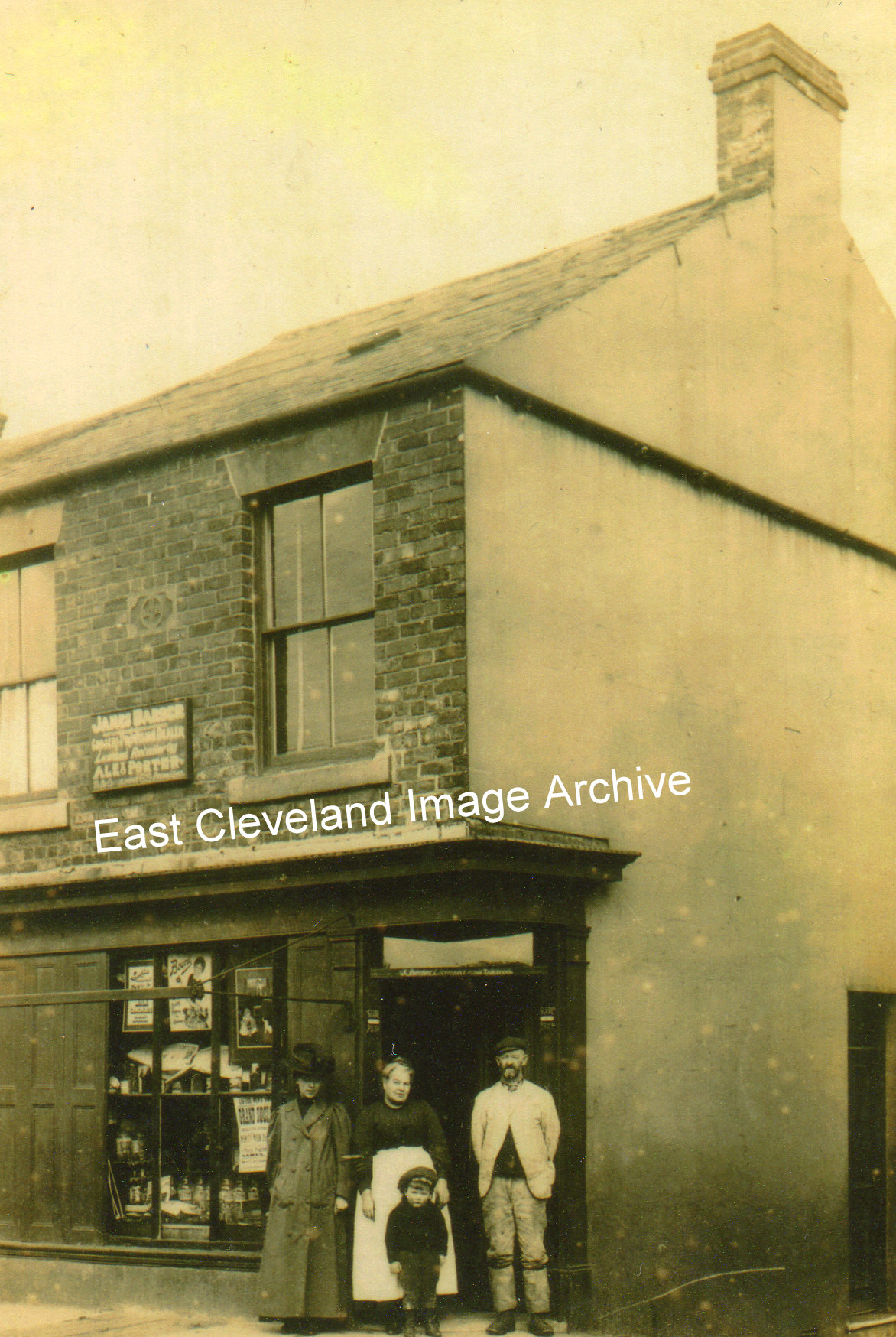 Another shop in East Loftus this time on Whitby Road, this photograph is dated 1907 and although I do not remember these people I do remember Ogden’s having this shop in the 1940’s and then I think Blaylock’s took it over. Do you remember it? Joan Gray advises: “I’m Joan Gray (daughter of Doris and Jack Gray) and as a child I lived in Tweed Street. I remember the shop and Bill and Mary Blaylock and their son Tony. I used to call them auntie and uncle, although I’m not sure if we were actually related. We moved away from Loftus in 1963 but I know my mum kept in touch with them by letter. I believe they retired to Marske. Whilst writing, my parents and relatives have passed on, so if anyone can please provide any photographs or information it would be greatly appreciated. Mum was Doris Emily Foster and dad was John William (known as Jack) Gray. Dad was originally from Skinningrove.” Image courtesy of Mrs Pauline Ovington, thanks to Joan Gray for the update. 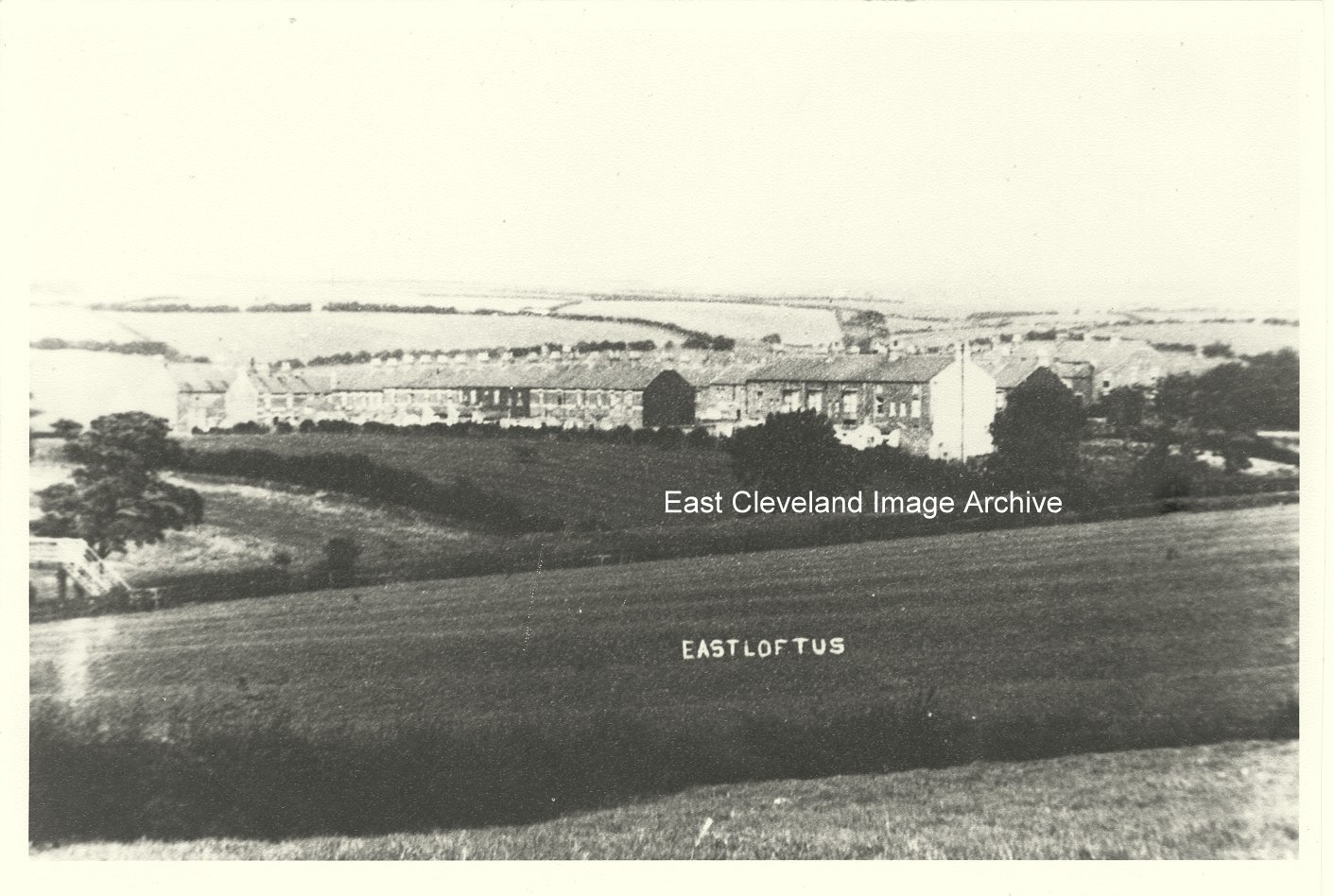 The street most prominent in this view of East Loftus is Tees Street, shown from the rear; all streets there are named after rivers. Tees, Tyne, Tweed, plus the newer builds of Esk Terrace and Humber Close; all accessible from Whitby Road. 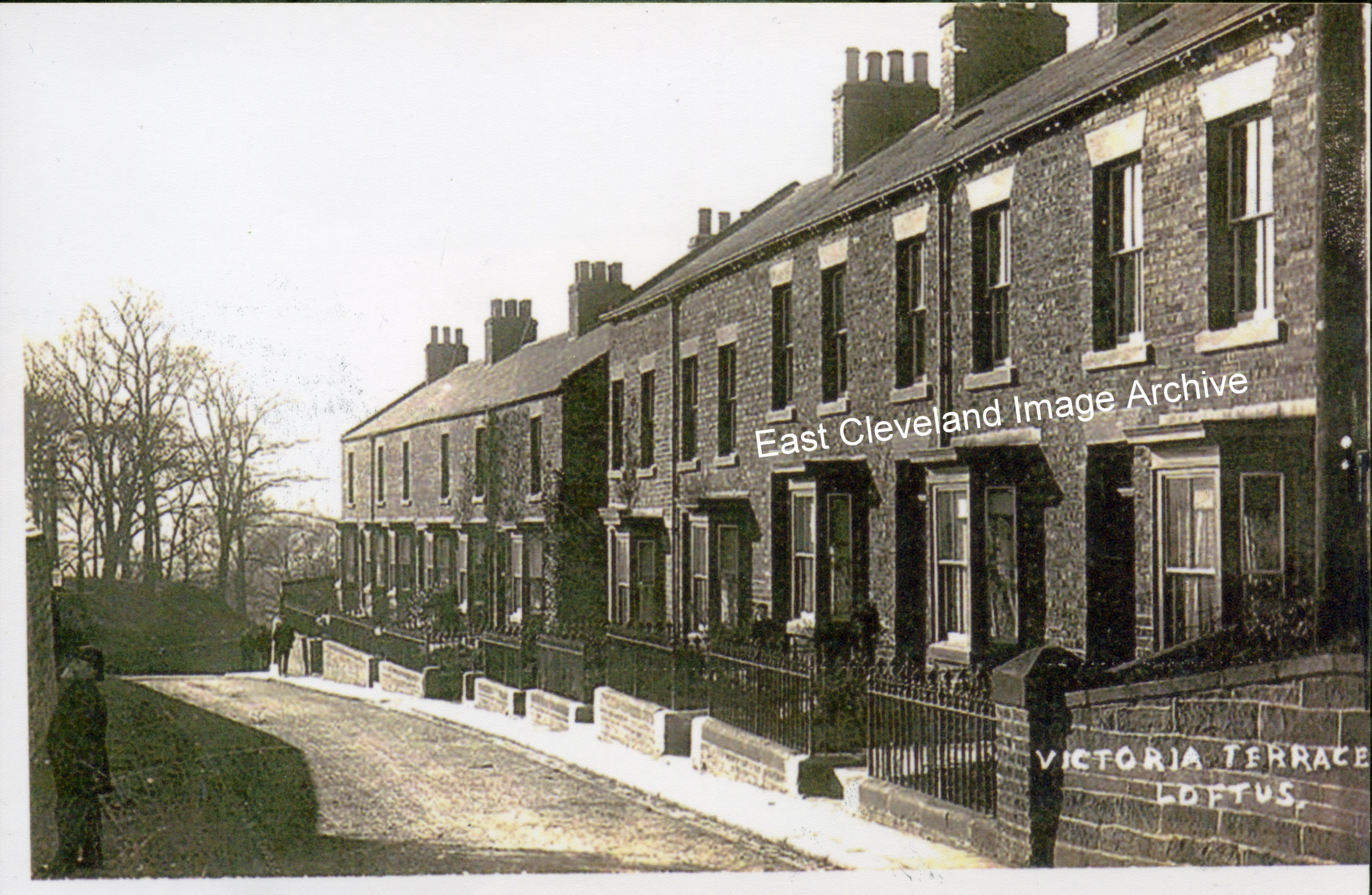 A wonderful view of Victoria Terrace in about 1900. In those days the residents would have a view over open farmland to the front. Note the gentleman in bowler hat and tail coat standing in the road talking, Obviously no buses or speeding traffic! Peter King asked:”I lived at number 8 in the 1940s. When did they take the railings down?” In this image the iron railings are still present, it is likely that the railings were removed as part of the ‘war effort’ in the early part of WWII. There are however, conflicting stories as to the usefulness or actual use of such collected materials. Jean Wiggins advised the Archive: “To the rear was once a candle factory or tallow house, it was closed in 1871 when East Crescent was being built, because of the foul smell emanating from the boiling fat.” Image courtesy of Michael Kilvington, update courtesy of Jean Wiggins and thanks to Peter King for that update. 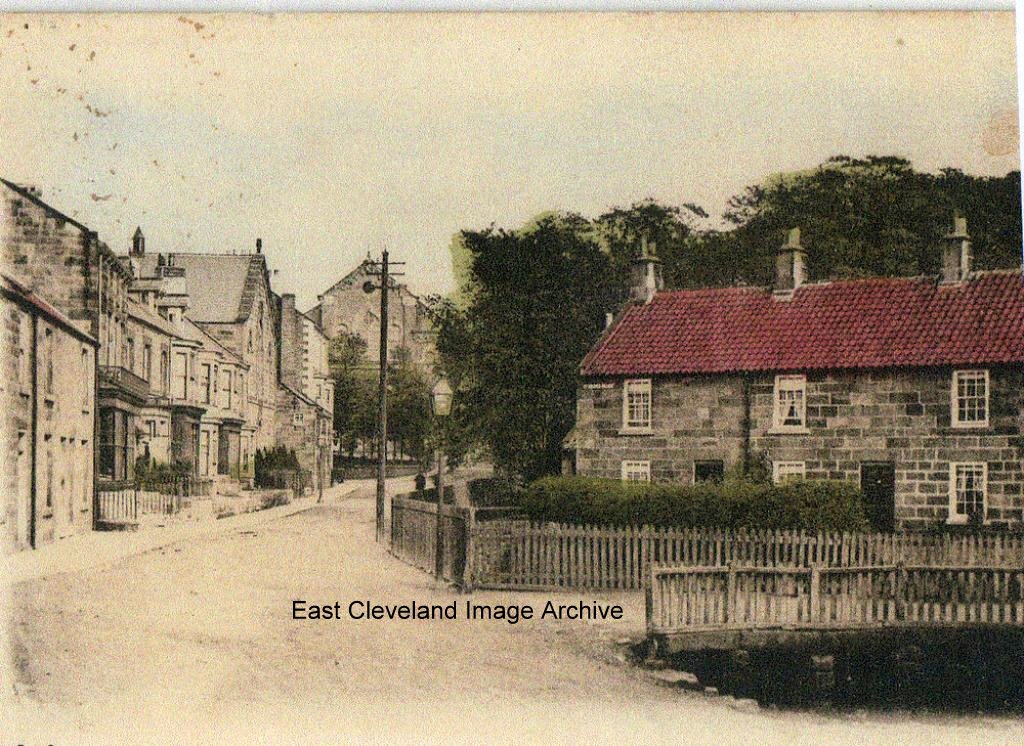 A lovely hand tinted photograph of the ever popular Arlington Street. The tinting was done with watercolours over the original sepia/black and white print and was very popular before the advent of cheap colour photography. |
||
Recent Comments